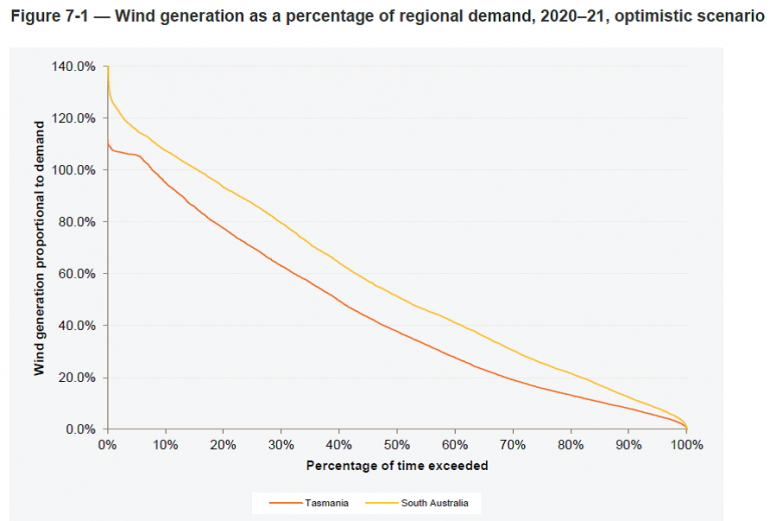Preparing for wind's dominance
The Australian Energy Market Operator has released analysis exploring how increased levels of wind generation will affect network and operational limits in the National Electricity Market.
The report assumes that due to the stimulus from the Large-Scale Renewable Energy Target the NEM will end up with 11,545 megawatts of wind capacity installed by 2020.
The study assumes the location of this capacity across the states detailed in the table below.

What’s worth noting is that under AEMO’s assumed wind farm locations, Victoria, South Australia and Tasmania would have greater wind farm capacity installed than their 2012 minimum level of demand.
In order to ensure power system reliability and keep power supply within the specifications electrical equipment needs to function properly and safely, AEMO needs to very closely match power supply with demand.
It has been shown through experience that wind can supply a very large proportion of a region’s demand. However, because wind output can’t be readily controlled, AEMO also needs to be able to draw upon other sources of power whose output it can rapidly vary up or down in response to changes in demand, and also changes in wind output. This can be from either conventional thermal power generators, hydro or a powerline interconnector to another state. In addition, it needs enough power capacity within a state to cope with a possible breakdown that might occur with large power generators or transmission infrastructure.
Within short periods of under five minutes AEMO has a special category of generation it can vary up and down almost instantaneously, which it refers to as FCAS regulation or frequency control. According to AEMO, they expect that with 11.5GW of wind, there’s a 99 per cent probability its variation in output within five minutes won’t be more 245MW.
According to AEMO:
These levels of generation change are still below historic levels of regulation FCAS (250 MW) that have been used in the NEM …
Examining the historical distribution of five-minute changes in wind generation output suggests that the impact of 2020 levels of wind generation on NEM frequency regulation is likely to remain manageable within the existing frequency regulation arrangements, given the five-minute balancing arrangements used for frequency control in the NEM.
However, its report also finds that there are some special challenges that arise in South Australia and Tasmania if they were to install as much wind as AEMO assumes. The chart below, based on real historical wind patterns, illustrates that in the case of SA (the yellow line) wind power output would exceed the state's entire 2020-21 demand for 20 per cent of the time and about 10 per cent of the time in Tasmania.

All this wind would squeeze out the thermal and hydro generators that AEMO can use to quickly alter electricity supply to ensure it matches demand. In the case of thermal generators if they are shutdown they can take a considerable amount of time to restart and ramp-up their output. They are far easier to ramp-up if they are already online and generating.
Interconnectors between Victoria and these two states can help to manage this issue but the interconnectors also face some constraints.
Based on historical wind data, AEMO believes that it would have insufficient access to fast response power supply for 25 per cent of the time in Tasmania and around 5-10 per cent of the time in SA, without some changes to how the power system is structured.
There are a range of options AEMO puts forward that could mitigate such problems and ultimately there is still some time before we get close to the levels of wind installations which AEMO assumes.
Indeed, there are good reasons to believe that lower levels of wind capacity would be installed in SA and Tasmania due to commercial reasons. Such high levels of wind within these relatively small electricity markets exposes owners to risks of wind output being curtailed as well as depressed electricity prices during highly windy weather when their output is greatest.













